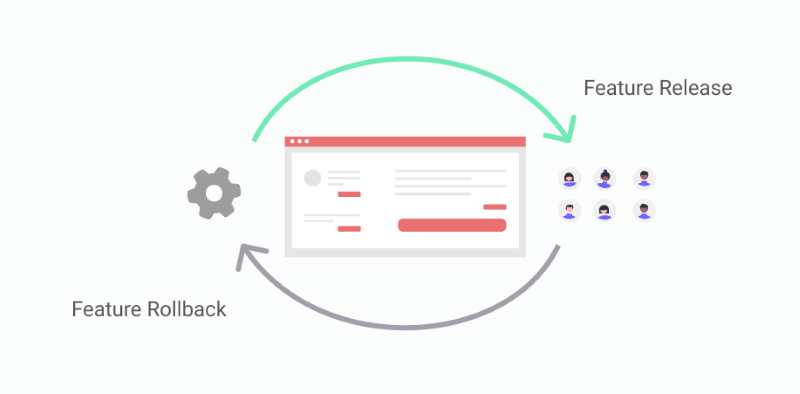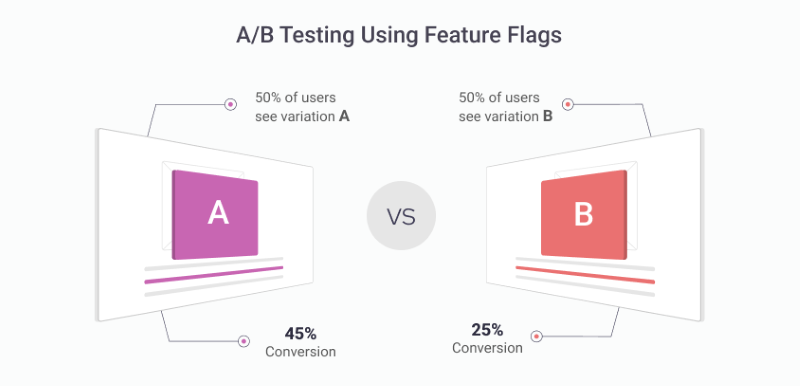Dart Feature Flag
(Everything You Need To Know)

Are you using Dart feature flags to control the app development process?
When it comes to programming, feature flags (or feature toggles) are a way of enabling or disabling certain features of your code on the fly. This can be useful in a variety of situations, such as when you want to release a new feature to a subset of users or when you need to quickly disable a feature that is causing issues.
Dart feature flags can play a pivotal role in the development process, allowing you to control when new features are released and giving you the flexibility to make changes without having to redeploy your entire app. This is essential for developers that want to move quickly and iterate on their products.
In this guide, we'll cover everything you need to know about Dart feature flags, including how to use them and when they are helpful. It's important to understand the specific use cases for feature flags to make sure you are utilizing them correctly in your development process.
Dart Feature Flags (How Do They Work?)
Flutter, the popular app development SDK created by Google, uses a programming language called Dart. You can leverage feature flagging tools to control the development process for your Dart-powered applications.
You can toggle features and functionalities "on" and "off" without having to redeploy your app. This enables you to test different features in staging environments before making these live for all users. You can target certain user segments to get feedback before rolling them out to your entire user base.
Feature flags also give you the ability to quickly disable a feature that is causing problems in your app. This can help you prevent users from being affected by bugs and can buy you time to fix the issue without taking your app offline.
With the support of a feature flag management solution like ConfigCat, the entire process is a breeze. You can gain complete control over the release process and make changes on the go without having to redeploy your app.
Dart Feature Flag Development (Why Does It Matter?)
Dart feature flag development tools are important because they provide you with the necessary freedom to experiment with your code. This means that you can try out new features and see how they perform without affecting your entire user base.
By decoupling code deployments from the rest of your application, you are limiting the risk of problems and ensuring that your users always have a positive experience.
For instance, let's say that you want to add a new feature to your app. With feature flagging, you can deploy the code for this new feature without making it live for all users. This enables you to test the feature in a staging environment and get feedback from a small group of users before rolling it out to everyone.
If there are any issues with the new feature, you can quickly disable it without impacting the rest of your app. This flexibility is vital for developers that want to move quickly and iterate on their Dart-powered products.
Safe deployments, happy users.
Dart feature flags allow you to push code changes with complete confidence, knowing that you can quickly roll back changes if something goes wrong. Rolling back code changes is a painless process that doesn't require you to redeploy your entire app.
If you are firmly committed to pushing your Dart code further and experimenting with new features, feature flagging tools can act as a safety net that enables you to ship code with confidence. Isolating new or updated features behind feature flags gives you the power to determine when they go live, making your release process completely customizable.
Feature Flag Deployment For Dart Apps (Use Cases)
Many developers often do not know that feature flags are used at every stage of the development process. From pre-release split testing to post-launch experimentation, feature flagging tools can help you ship code faster and with fewer headaches.
Enable and disable access to new features
For example, you can use feature flags to offer access to new features in your app before they are ready for everyone. This is a great way to get feedback from a small group of users and make sure that the new feature is stable ahead of rolling it out to your entire user base.

Control the risk of Dart coding bugs
Bugs happen, but with feature flags, you can contain them so they only affect a small group of users. This enables you to quickly fix the issue without taking your app offline. Feature flagging mitigates the risk of code changes and ensures that your user experience is not impacted by problems in your code.
A/B testing for data-driven decisions
Feature flags can also be used for A/B testing. This means that you can deploy two different versions of a feature and see which one performs better with your users. This type of experimentation is crucial for making data-driven decisions about your product.

Feature Flag Testing For Dart Apps (Best Tool For 2022)
With no shortage of feature flagging tools on the market, it's often difficult to distinguish the good from the bad. There are many variables to consider, including pricing, features, and ease of use.
ConfigCat supports simple feature toggles, user segmentation, and A/B testing and has a generous free tier for low-volume use cases or those just starting out. ConfigCat stands out as the best feature flagging tool for Dart apps.
When it comes to feature flag management, ConfigCat provides developers with everything they need to ship code with confidence. With a focus on simplicity and ease of use, ConfigCat is the perfect tool for developers that want to seamlessly leverage feature flags without any hassle.
ConfigCat is a feature flag service for teams that helps you turn features on and off, change their configuration, and roll them out gradually to your users. It supports targeting users by attributes, percentage-based rollouts, and segmentation. Available for all major programming languages and frameworks. Can be licensed as a SaaS or self-hosted. GDPR and ISO 27001 compliant.
Are you ready to begin deploying feature flags for Dart apps?
